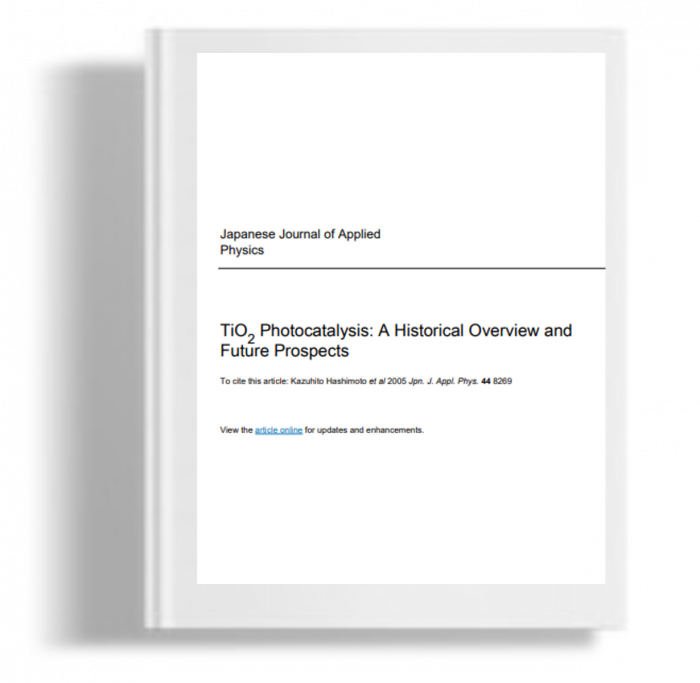Kami menggunakan cookies untuk membuat pengalaman Anda lebih baik. Untuk mematuhi petunjuk e-Pribadi yang baru, kami perlu meminta persetujuan Anda untuk menyetel cookies. Pelajari lebih lanjut .
TiO2 photocatalysis : A historical overview and future prospects
Photocatalysis has recently become a common word and various products using photocatalytic functions have been commercialized. Among many candidates for photocatalysts, TiO2 is almost the only material suitable for industrial use at present and also probably in the future. This is because TiO2 has the most efficient photoactivity, the highest stability and the lowest cost. More significantly, it has been used as a white pigment from ancient times, and thus, its safety to humans and the environment is guaranteed by history. There are two types of photochemical reaction proceeding on a TiO2 surface when irradiated with ultraviolet light. One includes the photo-induced redox reactions of adsorbed substances, and the other is the photo-induced hydrophilic conversion of TiO2 itself. The former type has been known since the early part of the 20th century, but the latter was found only at the end of the century. The combination of these two functions has opened up various novel applications of TiO2, particularly in the field of building materials. Here, we review the progress of the scientific research on TiO2 photocatalysis as well as its industrial applications, and describe future prospects of this field mainly based on the present authors’ work.
- Baca | Unduh PDF
- TiO2 photocatalysis : A historical overview and future prospects
Photocatalysis has recently become a common word and various products using photocatalytic functions have been commercialized. Among many candidates for photocatalysts, TiO2 is almost the only material suitable for industrial use at present and also probably in the future. This is because TiO2 has the most efficient photoactivity, the highest stability and the lowest cost. More significantly, it has been used as a white pigment from ancient times, and thus, its safety to humans and the environment is guaranteed by history. There are two types of photochemical reaction proceeding on a TiO2 surface when irradiated with ultraviolet light. One includes the photo-induced redox reactions of adsorbed substances, and the other is the photo-induced hydrophilic conversion of TiO2 itself. The former type has been known since the early part of the 20th century, but the latter was found only at the end of the century. The combination of these two functions has opened up various novel applications of TiO2, particularly in the field of building materials. Here, we review the progress of the scientific research on TiO2 photocatalysis as well as its industrial applications, and describe future prospects of this field mainly based on the present authors’ work.

